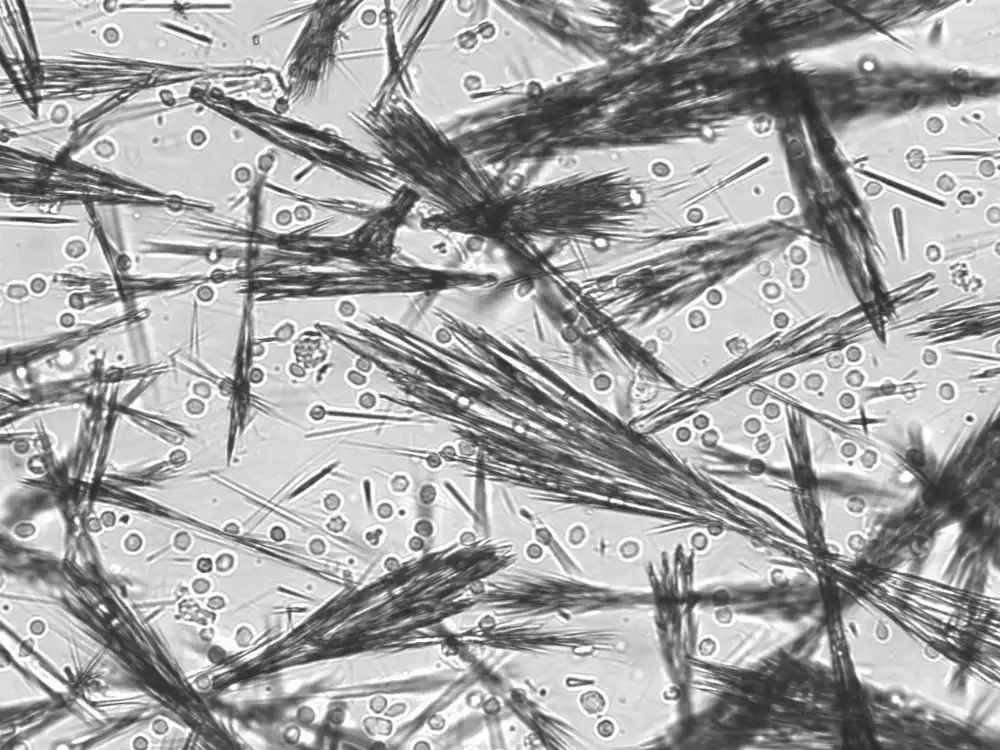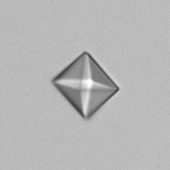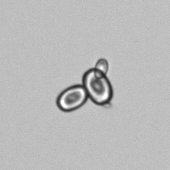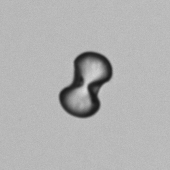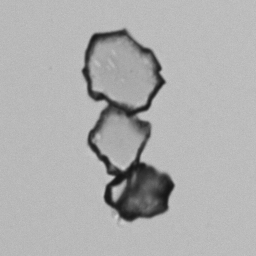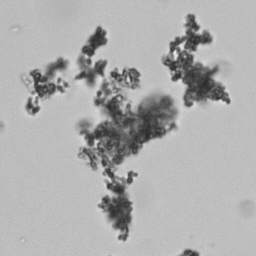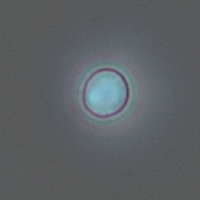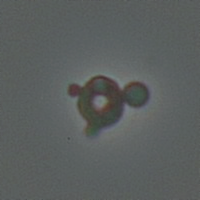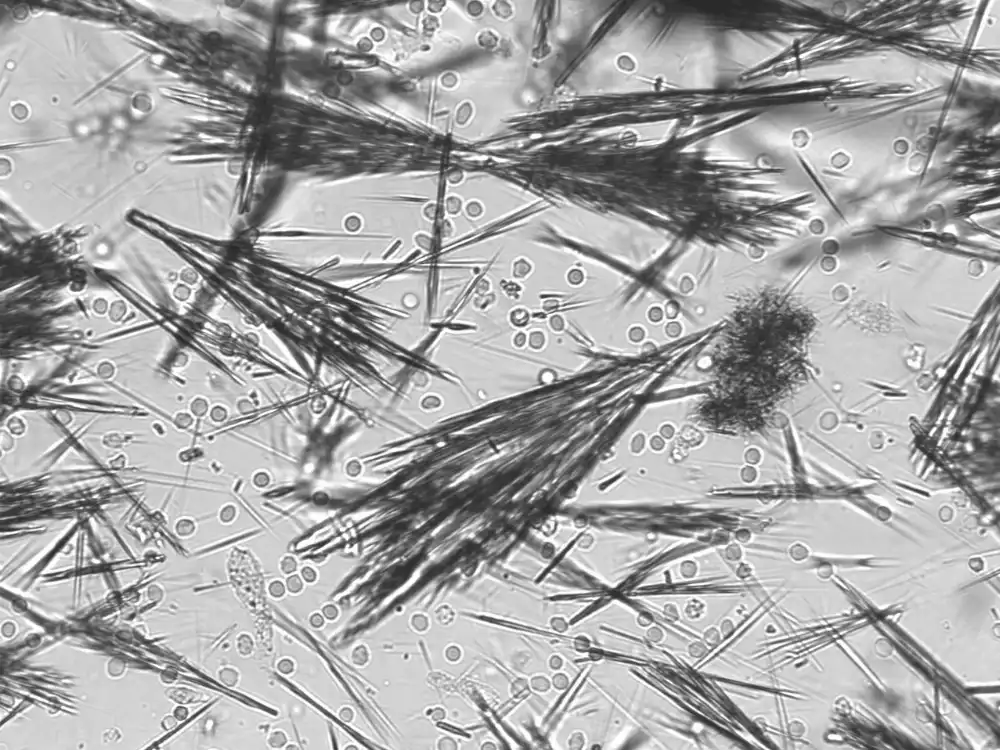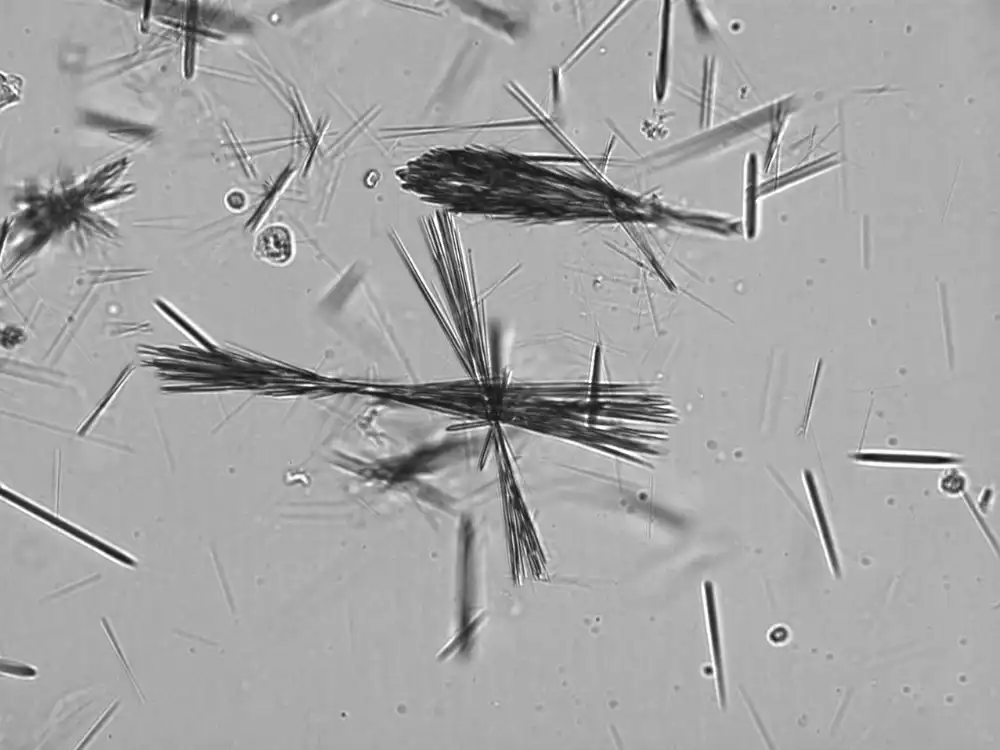Amoxicillin
Pathological
Amoxicillin is a broad-spectrum β-lactam antibiotic that inhibits bacterial cell wall synthesis by blocking peptidoglycan crosslinking, leading to bacterial lysis and cell death. With high doses, intravenous administration, decreased hydration or pre-existing renal impairment, amoxicillin trihydrate may crystallize in the urinary tract. This can lead to crystalluria, macroscopic hematuria, and in more severe cases, acute renal insufficiency.
The crystals are colorless, highly birefringent under polarized light, and appear in characteristic shapes such as needles, "shocks of wheat" or "broom-like structures." Renal damage is thought to be caused by intratubular crystal precipitation and medullary congestion, although obstructive uropathy due to precipitation in the renal pelvis has also been described. Clinical symptoms usually resolve quickly after drug discontinuation: crystalluria disappears within 24 hours, hematuria within 3 days, and renal failure usually recovers within 3 to 17 days. Crystals from other antibiotics, such as ampicillin or cephalexin, should be considered in the differential diagnosis.
Overview
